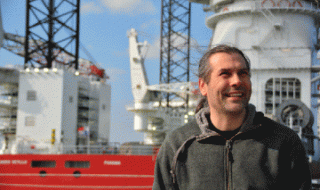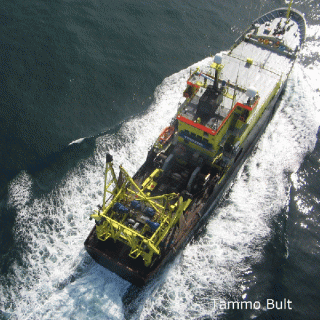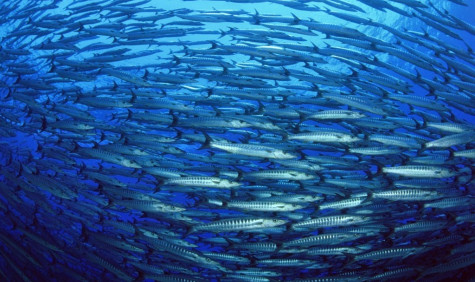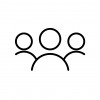IMARES: storing acoustic data on herring stocks
IMARES is the Dutch institute for applied marine ecological research. It acquires knowledge and gives advice on sustainable management and use of marine and coastal areas. IMARES is mapping fish stocks in the North Sea using acoustic signals. The data is stored with the help of SURF's Data Archive service.
In het kort
Wie: Daniel Benden
Functie: Softwareontwikkelaar
Organisatie: IMARES, onderdeel van Wageningen Universiteit
Dienst: Data Archive
Uitdaging: Het veilig en kostenefficiënt opslaan van grote hoeveelheden akoestische data over de visstand in de Noordzee.
Oplossing: IMARES slaat deze data langdurig op met behulp van de Data Archive-dienst van SURF, wat zowel kosten bespaart als zorgt voor veilige opslag.
Measuring fish stocks using sound pulses
How do you research herring stocks in the North Sea? IMARES (part of Wageningen University) uses acoustic data, says Daniel Benden (software developer): "We have an echosounder under our vessel which sends sound pulses into the water. We can use the reflection from these pulses to determine whether something is swimming underneath the vessel: a school of herring or mackerel, for example. We can use this incoming data to determine the number of fish. We can't yet determine the species of fish with sufficient accuracy but that will come. We currently determine the species by fishing."

Daniel Benden in front of the research vessel
Defining catch quotas
IMARES uses a vessel supplied by the Dutch coastguard agency, the Rijksrederij. The vessel works in the North Sea. To determine herring stocks, the Netherlands is researching an area off the coast of Scotland between Aberdeen and Newcastle. The data will be combined with data for the rest of the North Sea, which is being provided by European partners.

"Among other things, the results will be used to determine the size of the population and ultimately to define a sustainable annual catch quota," says Benden. "Recommendations will be made at the international level to the various partners involved in the fishing industry. In the case of North Sea herring that means the EU and Norway. The Netherlands will ultimately be awarded a proportion of the EU quota."
Archiving data
The data is recorded on a hard disk on the vessel using an NAS (a hard disk with a network connection). Back on shore Benden takes the disks to SURF where the data is uploaded. At the moment the quantities are not very large: but the echosounder is expected to generate around 8 TB of data per year. Archiving this data requires only two visits a year to SURF.
"We immediately felt comfortable talking to SURF. Nothing is a problem, everything is possible. That's what clinched it for us."
There's a solution to everything
What is the benefit of this approach for IMARES? "First and foremost it's the cost. Storing the data at Wageningen University was pretty expensive," says Benden. "But the service was also important: we immediately felt comfortable talking to SURF. Nothing is a problem, everything is possible, there's a solution to everything. That's what clinched it for us. In principle, access to the data is straightforward, it's only the network speed at our IJmuiden site that causes a bottleneck. But that's true of any external location. And ultimately it's about long-term storage."

